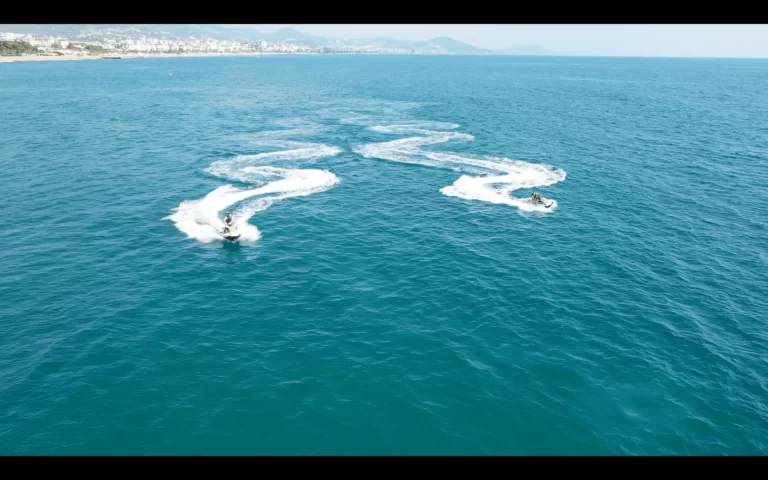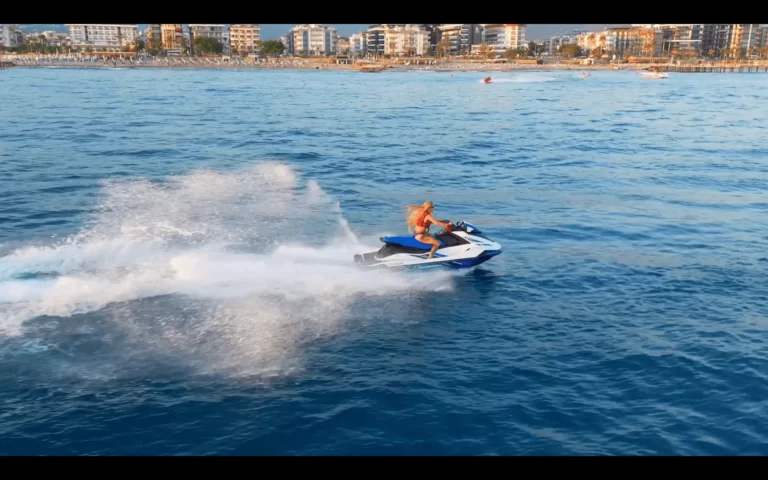Riding Jet Ski with Others
Riding with Others
Riding with passengers on a jet ski can be a fun and memorable experience, but it comes with added responsibility. Here are safety considerations to keep in mind:
Check Weight Capacity: Ensure your jet ski can safely accommodate the combined weight of you and your passengers. Exceeding weight limits can affect stability and maneuverability.
Provide Life Jackets: Ensure that all passengers, including yourself, wear properly fitting life jackets. Choose life jackets that are appropriate for the passenger’s size and weight.
Inform Passengers: Brief your passengers on safety guidelines, including how to hold on, where to sit, and what to do in case of an emergency.
Passenger Placement: Instruct passengers to sit or kneel in a way that balances the weight evenly on the jet ski. Avoid excessive weight shifts.
Steady Acceleration: Gradually accelerate to avoid sudden jerks or loss of balance. Be mindful of how your passengers react to acceleration.
Slow Maneuvers: Perform turns, stops, and maneuvers slowly and gradually to prevent sudden movements that could displace passengers.
No Horseplay: Encourage passengers to stay seated and hold on securely. Discourage any horseplay or standing on the jet ski.
Maintain Distance:
Keep a safe distance from other watercraft, swimmers, and stationary objects to avoid collisions.
Be Mindful of Wakes: Be aware that wakes from other boats or jet skis can affect stability. Reduce speed when crossing wakes to ensure a smooth ride for passengers.
Communication: Establish clear communication with your passengers. Use hand signals or simple verbal cues to indicate when you’re accelerating, turning, or slowing down.
Know the Weight Limit: Understand the weight limit and passenger capacity specified by the manufacturer for your jet ski model.
Tips for Maintaining a Safe Distance from Other Jet Skis
Maintaining a safe distance from other jet skis is essential for avoiding accidents and collisions.
Here are some tips:
Practice Defensive Riding: Assume that other jet ski operators may not always follow safe riding practices. Be prepared to react to unexpected maneuvers from other riders.
Keep a Buffer Zone: Maintain a reasonable distance from other jet skis, especially when riding at high speeds. This buffer zone allows you to react to sudden changes in direction.
Observe Right-of-Way: Follow the right-of-way rules. Typically, jet skis entering from the right must yield to those already in motion. Be aware of local navigation rules.
Avoid Congested Areas: In busy areas with numerous watercraft, consider slowing down and keeping a wider berth to reduce the risk of collisions.
Look Over Your Shoulder: Periodically check behind you to ensure no other jet skis are approaching rapidly. This is especially important when changing direction.
Use Mirrors (if available): If your jet ski is equipped with mirrors, use them to monitor your surroundings and spot approaching watercraft.
Communicate: Use hand signals or simple gestures to communicate your intentions to other riders. Clearly indicate your turns and maneuvers.
Be Cautious Near Swimming Areas: Reduce speed and maintain a safe distance when approaching designated swimming areas or crowded beaches.
Avoid Jet Ski Conga Lines: Refrain from riding in long lines of jet skis, as this can increase the risk of collisions. Maintain a staggered formation.
Stay Alert: Always stay alert and attentive to your surroundings. Distracted riding can lead to accidents.





